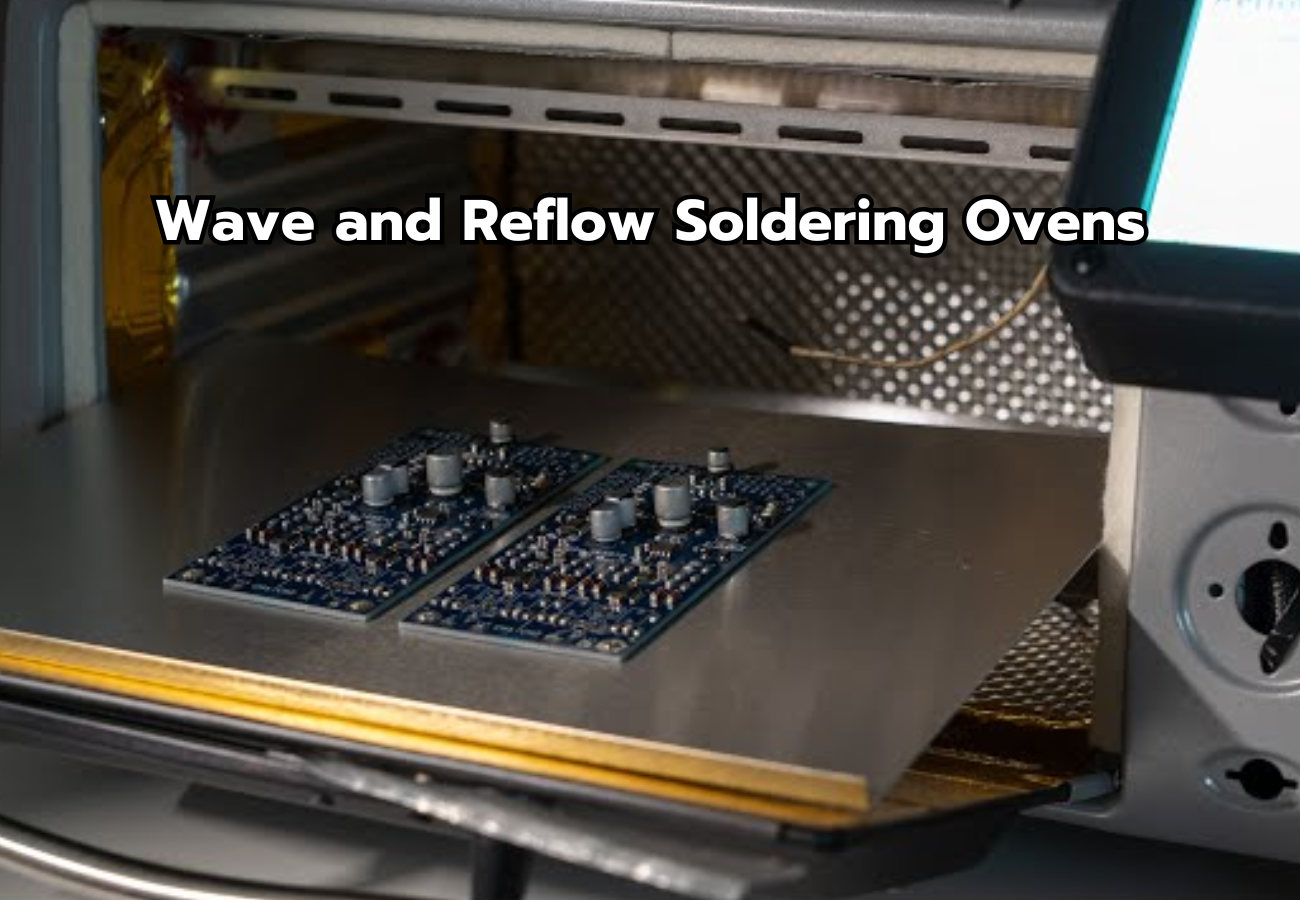Wave and Reflow Soldering Ovens
อุปกรณ์อิเล็กทรอนิกส์ในทุกวันนี้ ที่มีขนาดเล็กลงเรื่อยๆ เป็นผลมาจากพัฒนาการด้าน semiconductor ที่สามารถย่อขนาดของวงจรไฟฟ้าลงมาหลายเท่าตัว และทำให้มนุษย์ต้องคิดค้นวิธีการผลิตอุปกรณ์อิเล็กทรอนิกส์เหล่านี้ ซึ่งแต่เดิมเคยใช้มนุษย์ในการเชื่อมบัดกรี มาเป็นการใช้เครื่องจักรและเทคนิคประกอบ ต่างๆเข้ามาแทนที่ แต่ถึงแม้ความก้าวหน้าทางการผลิต PCB จะล้ำหน้าไปมากแค่ไหน การควบคุมปริมาณออกซิเจนในระหว่างผลิต ก็ยังเป็นปัจจัยพื้นฐานสุดคลาสสิคที่ตัดสินคุณภาพของงานไม่เปลี่ยนแปลง
Wave soldering and reflow soldering ovens are designed to automatically “solder” the components on a printed circuit board (PCB). They consist of a varying number of thermal chambers where the temperature can be independently controlled depending on the type of PCB. Since oxygen causes oxidation of the solder, resulting in poor, weak connections, nitrogen is used to inert the oven’s environment prior to soldering.
Before the PCB can be soldered, it needs to have the electronic components (resistors, eprom fixtures, etc.) put in place. This is usually automated and performed by a specialized machine. This process is called surface mounting or surface mount technology (SMT).
Now that the PCB’s components are in place, or it is “stuffed”, it is ready for soldering. The reflow/wave soldering oven is turned on and nitrogen is pumped into the oven’s chambers to remove the ambient air levels of oxygen. This is know as “purge-down”. Most ovens can be equipped with gas sampling ports for measuring oxygen levels in the oven’s chambers. Typical oxygen levels after purge-down are in the 50-100ppm range, but these levels can vary depending on the specific manufacturer of the oven and it’s efficiency. After purge-down is complete, the PCB enters the reflow oven via a conveyor belt system. As it moves through the oven’s thermal chambers, it is heated up, the solder is applied, and then it is cooled down.
The two areas of concern for monitoring in the reflow/wave soldering ovens are the nitrogen supply line and thermal chambers. Oxygen levels in the nitrogen supply should be in the low ppm levels. Oxygen levels in the thermal chambers vary, but are usually not lower than 50ppm.
The RACE™ sensor is the ideal sensor for this application. It is designed to rapidly measure oxygen levels from 20.9% (ambient air) down to .1ppm. This RACE™ sensor is not affected by saturation from high oxygen levels. The RACE™ sensor allows the customer to visually observe and track the efficiency of their oven’s purge-down in real time. Direct control of the oven can be achieved by using the instrument’s available options such as user-adjustable alarms, scaleable analog output signals, and RS232 communication.
เราเป็น OEM ให้ผู้ผลิต Reflow Oven แบรนด์อย่าง Heller, BTU, Conceptronics, ASM, Despatch, Axis, Seho, Sikama, หรือแม๊แต่ UV Curing Oven อย่าง IST, UVio, Advanced, ETI, Carbolite
ปรึกษา Tasatec เกี่ยวกับวิธีการใช้เครื่องวิเคราะห์ออกซิเจนของคุณกับความต้องการของกระบวนการของคุณ
เราจะมีเนื้อหาดีๆเกี่ยวกับ oxygen measurement in Reflow Oven มาอีกเรื่อยๆนะค่ะ คอยติดตามและพบกันใหม่ในบทความหน้า
#OxygenAnalyzer #Furnace #Oven #เครื่องวัดออกซิเจน #เตาเผา #เตาอบ #วัดออกซิเจน #ผลิตPCB #oxygeninreflowoven #บัดกรี #reflowovens #เตาหลอมแบบรีโฟลว์


